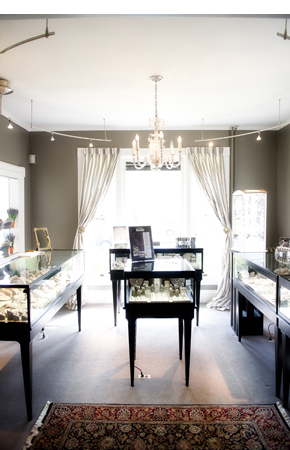 Two stones celebrate November birthdays. The pretty pair share a similar coloring and can even be confused for each other when not viewed by the trained eye. While topaz and citrine capture the shades of autumn in rich gold and tawny brown, their mineral compositions are completely different. The two minerals also differ in hardness – the slightly sturdier topaz registers an eight on the Mohs Scale of mineral hardness, citrine quartz is a seven. Here are other fun facts that make the November sparklers unique and lovely in their own way.
Two stones celebrate November birthdays. The pretty pair share a similar coloring and can even be confused for each other when not viewed by the trained eye. While topaz and citrine capture the shades of autumn in rich gold and tawny brown, their mineral compositions are completely different. The two minerals also differ in hardness – the slightly sturdier topaz registers an eight on the Mohs Scale of mineral hardness, citrine quartz is a seven. Here are other fun facts that make the November sparklers unique and lovely in their own way.
Terrific Topaz
With a name that hails from Topazios, the old Greek name for a small island in the Red Sea, November’s stone is sometimes refered to as precious topaz. Why ‘precious’? To separate its lovely yellow, brown and orange hues from the blue topaz that celebrates its color as the December birthstone. The colorful stone is allochromatic, meaning that it gets its color from impure elements in its crystal structure.
Did you know?
Discovered in 1984, the “El-Dorado Topaz” is the largest faceted topaz and the largest faceted gemstone in the world, at an astonishing 31,000 carats. The stunning emerald-cut gem originated in mineral-rich southeastern Brazil, a premier source of enormous topaz crystals.
Sensational Citrine
From the quartz family, the second most abundant mineral in the Earth’s continental crust, citrine is a lovely choice for birthstone. Ranging in color from a pale yellow to brown, citrine’s name is derived from the Latin citrina which means “yellow” and is also the origin of the word “citron.” Today, its attractive color, plus the durability and affordability it shares with most other quartzes, makes it the top-selling yellow-to-orange gem.
Did you know?
Citrine and amethyst quartz are sometimes found together on the same crystal, forming a stone called ametrine. It has been written that some of Elizabeth Taylor’s grand onscreen jewelry for the movie “Cleopatra” featured more than a few citrine gems.







No comments yet.